update:August 7, 2025
A special interview for the Toyota Foundation’s 50th year anniversary project
Empowering Local Communities to Support Older Adults in Prefectural Border Areas
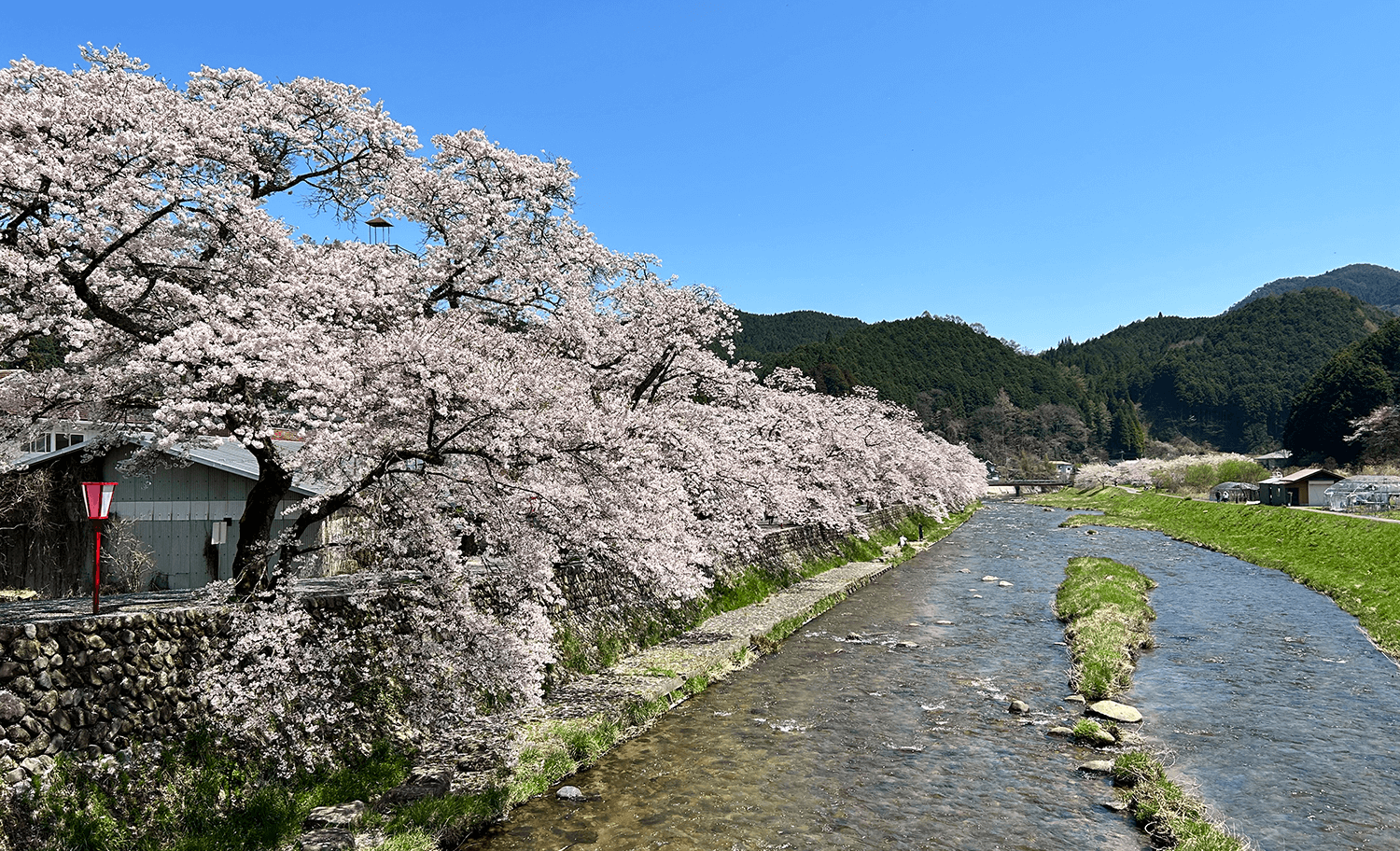
Interviewed by Ryota Mutou and Natsumi Washizawa
Japanese text written by Nobuaki Takeda
Translated by Saya Kitaoji
As Japan continues to grapple with the impacts of a rapidly aging and shrinking population, as well as the steady increase of people flocking to urban centers for education and employment, rural areas are seeing the closure of essential services such as supermarkets and hospitals, school mergers, and reduced or discontinued public transportation services. One particular issue of concern is the emergence of so-called “shopping refugees” in remote mountainous areas, where many older residents are experiencing difficulties in their daily lives after voluntarily surrendering their driver’s licenses. Although both the national and local governments are implementing information and communication technologies and other innovations in rural areas, will such measures alone be enough to address this unprecedented crisis?
In 2013, the Toyota Foundation provided a grant to support a project that specifically addressed the ongoing challenges faced by rural communities in Japan. Led by the nonprofit organization (NPO) Minna no Shūraku Kenkyūjo (Community for All Institute), hereafter Minken , in Okayama Prefecture, “Implementing Cross-Border Solutions to Support Daily Living Activities, Focusing on Shopping, in the Remote Mountainous Areas of the Chūgoku Region” is an initiative that has brought together a network of intermediary support groups from the five prefectures that make up the Chūgoku region : Hiroshima, Okayama, Shimane, Tottori, and Yamaguchi. The following article is based on our interview with the institute’s chief researcher, Ms. Noriko Abe, as well as researchers Mr. Masahiko Mimura and Mr. Ken’ya Ono, about the project’s objectives, achievements, and current activities.
Details
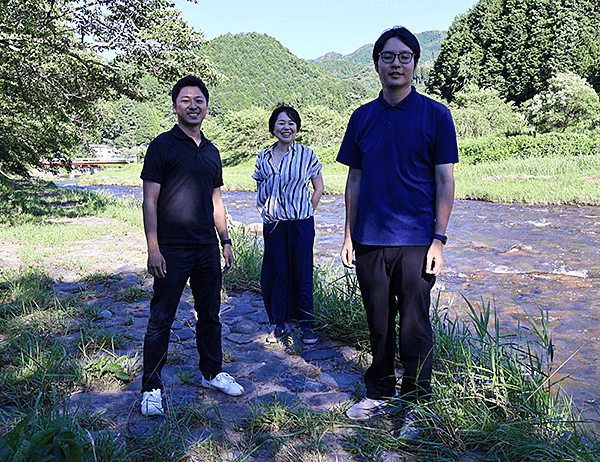
- Program
- 2012 Grant Program for Community Activities in Japan
- Project Title
- Implementing Cross-Border Solutions to Support Daily Living Activities, Focusing on Shopping, in the Remote Mountainous Areas of the Chūgoku Region
- Grant Number
- D12-LS-0076

- Grant Period
- April 2013 to March 2014
- Main area of activity
- Chūgoku region
- Abstract of Project Proposal
- This project aims to collaborate with support organizations in rural, mountainous areas across the Chūgoku region to conduct regional surveys and group interview to consult with local residents on lifestyle-related issues. Based on this preliminary research, we will host roundtable discussions with relevant stakeholders and users of essential infrastructure for daily life (i.e., local residents) across administrative boundaries. The objective of these discussions will be to initiate practical solutions, starting with those that can immediately be implemented. The project aims to establish and implement small-scale, multifunctional community-based initiatives that combine activities such as grocery shopping, agriculture, and welfare checks for older residents, transcending prefectural and municipal boundaries. It will implement two model initiatives within the grant period and then transfer the expertise developed through this project to similar areas in the Chūgoku region and nationwide.
In which locations do older adults face the most challenges?
Picture yourself growing older while living in a beloved family home on a scenic hilltop. You start feeling uneasy about driving and decide to surrender your driver’s license voluntarily. What kind of impact do you think this would have on your daily life? To do your grocery shopping, you start relying on public transport, but it’s a long walk to the closest bus stop and the services are infrequent. Carrying your groceries home is also challenging. If you live in a remote area, government offices and hospitals are far away, and you start to become anxious about what might happen in case of an emergency. More and more people in Japan are expected to face such challenges in the future, especially in remote mountainous areas.
The Chūgoku region, protected by a mountain range that runs through its center, is less vulnerable to typhoons than other parts of Japan while enjoying abundant water resources. However, many of its residents live in mountainous areas, as well as remote islands in the Seto Inland Sea and the Sea of Japan. For instance, 75.7% of Okayama Prefecture is classified as mountainous. Minken’s chief researcher, Ms. Noriko Abe, lives in a mountainous part of Okayama herself. She said,
I felt firsthand the urgent challenges faced in such areas, which will see the impacts of population decline and an aging population much sooner than the rest of Japan—perhaps within the next 5 to 10 years, rather than 20 years. And we wondered where specifically people would experience the most difficulties in these mountainous areas … Through discussions with our director, Mr. Tatsuya Ishihara, we concluded that some of the most severely affected areas would be those along the borders of prefectures .
The prefectural border areas are located in the Chūgoku Mountains, which are known for their steep terrain and significant changes in elevation. The declining population has been accompanied by a corresponding decrease in essential services such as shops and hospitals. Moreover, owing to municipal mergers, many residents are now forced to travel further to access government offices. The proportion of the population aged 65 years and older is significant—over 30% in many parts of the Chūgoku region and even surpassing 50% in others. Another problem is that people’s living and economic activities cross prefectural borders, but they are unable to receive local government subsidies or use community buses provided by prefectures other than their official place of residence. Residents in Maniwa City in northern Okayama, for example, are geographically closer to supermarkets and hospitals in Tottori Prefecture than to the closest urban center of Tsuyama in their own prefecture. As Ms. Abe explained,
We posited that these areas face three major barriers: geography, aging population, and bureaucracy. By investigating and finding ways to address the issues faced by residents of these prefectural border areas, we believed we could develop solutions for other mountainous regions as well. That’s when we saw the Toyota Foundation’s call for multiregional projects and decided to apply.
The wisdom of the people is always one step ahead : Case study of transportation support for older adults in Mikamo, Maniwa City, Okayama Prefecture
This project was conceived and led by the NPO “Minna no Shūraku Kenkyūjo” (Minken), a research institute that was established at the same time as this grant application. It was implemented in collaboration with an existing network of intermediary support groups in the five prefectures of the Chūgoku region. These organizations used their network to speak to local governments, community groups, NPOs, and companies in regions along prefectural borders, such as the Okayama–Tottori and Shimane–Hiroshima borders, furthering their understanding of the conditions in each region. According to Ms. Abe, Minken found that “privately organized initiatives were helping to support older adults overcome the three major barriers that we initially identified.” Mr. Fumio Inada, a spokesperson from Mikamo district in Maniwa City, shared a story about one such initiative that was helping to transport older adults to hospitals across the border in Tottori Prefecture. This service is continuing to be developed while successfully incorporating revisions to the public transportation systems.
The Mikamo district of Maniwa City is located in the northwestern part of Okayama Prefecture. As of March 2024, it had 465 households and a population of 989, 55.42% of whom were aged 65 years or older. The challenges of transportation for older adults were discussed at a meeting at city hall several years before this project was conceived, but at the time complications with the taxi industry made it difficult for the city to provide transportation support. Nevertheless, Mr. Inada, who chaired the meeting, did not give up, and devised a new scheme as follows.
Person A, an older adult, owns a car but finds it difficult to drive to the hospital, which is far away. However, they can be driven to the hospital in their own car by another local resident, Person B. Person B does not specifically request money from Person A. Rather, Person A automatically pays Person B approximately 1,000 yen per hour, which includes basic expenses (i.e., petrol) and a tip . The driver does not need to broach the issue of money, as the payment is always initiated by the passenger.
These drivers have been demonstrating their volunteer spirit by providing free transportation to those who need it. Mr. Inada said, “When the Ministry of Land, Infrastructure, Transport and Tourism issued the ‘Guidelines for Transportation Not Requiring Permission or Registration under the Road Transportation Act’ in March 2024, I thought, ‘This is it!’” It was as though the government had issued a stamp of approval for what they were doing in the Mikamo district. In addition, twice a month, the city rents a minibus that can carry up to eight passengers for shopping trips to the large supermarkets in the districts of Katsuyama and Kuse, also in Maniwa City. For 300 yen per trip, the bus picks up passengers at their doorstep. It is not just a shuttle but also a lively social experience for the passengers, who enjoy chatting as they head to their destination.
Mr. Inada explained that he gives the passengers his personal mobile number because “I encourage them to call and ask me for advice, as I’m here to help resolve any problems they may encounter.” This also gives him an idea of the passengers’ health and general living conditions. Such efforts show how the wisdom of the people is helping to bridge the gaps between community needs and existing systems and policies.
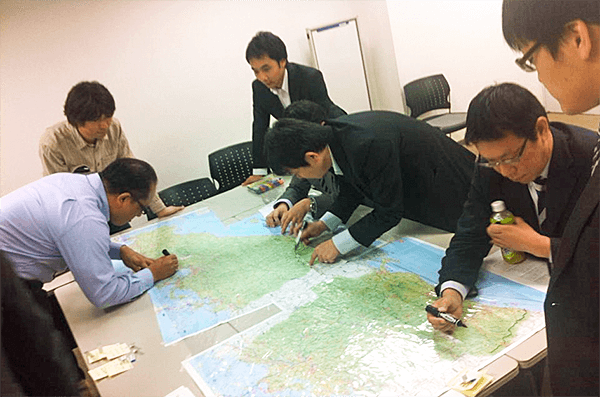
Furthermore, the interviewees providing private transportation services were operating across prefectural borders. Ms. Abe explained:
In other words, community groups and private enterprises are the ones who can help to overcome the three major barriers we identified. It is precisely because they are closest to the people in need that they can accurately grasp and therefore tackle the issues in ways that the government cannot. At the same time as our work in Mikamo, we were supporting a local residents’ organization in the Uji district of Takahashi City. We assisted them in surveying residents of junior high school age and above, asking them about the local events and activities. We then used the results to adapt those events and activities into initiatives that would better serve community needs. This experience turned our belief in the potential of community groups into conviction.
Empowering community groups by helping them to leverage their strengths: Case study of community activities in Uji, Takahashi City, Okayama Prefecture
In 2013, the Uji district of Takahashi City had around 250 households and a population of 677, 49% of whom were aged 65 years or older. While the community had been working hard to develop the district and interact with urban areas through farm experiences and rural resorts, the people were becoming exhausted and the core members were getting older —they needed to stop and reassess their situation. Minken decided to conduct a survey to ascertain the needs and hopes of each resident, distributing it not only among the heads of households but to all residents of junior high school age and above. The response rate was high, at 79.1%. Minken noted some of the insights gleaned as follows: “There is a gap between events that people wanted to continue and events that they themselves could help to organize”; “Many older adults need support in their daily lives”; and “There is a need to bring in new residents who can take on community leadership roles.” Most significantly, the survey found that the prevailing view of more than half of the respondents was that “the community would become more vibrant as long as we all pool our wisdom and take action.”
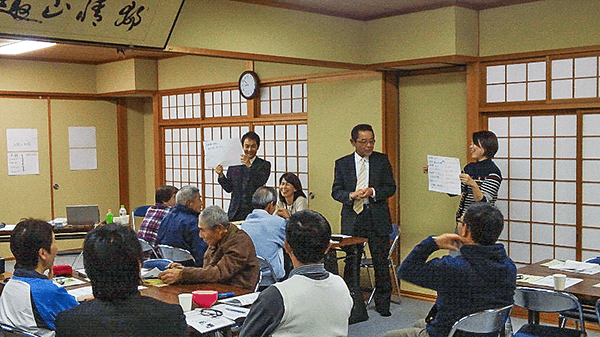
In response to this survey, Minken formed a project team by recruiting participants from different age groups. Not only the older generation who had hitherto been most active in community affairs, but also those in their 20s, 30s, 40s, 50s, and 60s, gathered to develop new initiatives to support daily living, discussing ideas on an equal footing in a roundtable format. Ms. Abe was involved in facilitating the discussion process and the survey review. Providing support that values the voices and aspirations of the community has since become the foundation of how Minken engages with community groups.
The Ministry of Internal Affairs and Communications currently refers to community groups that deal with local issues as regional management organizations (RMOs). RMOs have become known as key players in helping to address various kinds of regional challenges. For example, the Ministry of Agriculture, Forestry and Fisheries is also organizing model projects with what it calls “rural RMOs,” which are RMOs focused on agricultural land management. In addition to transportation support, daily living assistance, and land management, RMOs across Japan are addressing issues such as vacant houses, disaster prevention, education, rural landscape conservation, and poverty, tailoring solutions to the specific needs and circumstances of each locality.
Minken is a specialized think tank that has been at the forefront of supporting the efforts of RMOs. A decade since the establishment of this project and organization, Ms. Abe shared her thoughts: “When we created Minken, one of our goals was to make this kind of work a viable career for people, not just a side job or volunteer activity. We wanted to establish a profession that we could then pass on to the next generation.”
Working at a think tank for communities
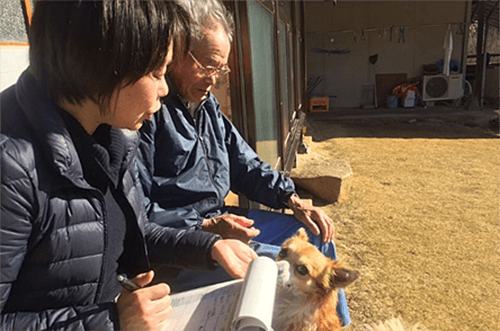
Both Mr. Masahiko Mimura and Mr. Ken’ya Ono joined Minken as graduates. Now in their early 30s, they are community support professionals. Minken not only provides support for RMOs but also assists local governments in designing and building systems in collaboration with RMOs, conducting surveys on shopping and other daily living activities, helping senior high school and college students to learn from and participate in RMO activities, and inducting community revitalization teams and organizing workshops for them. Ms. Abe admitted that she had initially been concerned that “fresh college graduates might find the work challenging,” but Mr. Mimura and Mr. Ono have not only persevered but also become trusted figures in the communities they work with. (Now, even a high school graduate has joined the team to assist with surveys.) Minken is currently being restructured to position these two mid-career researchers as future leaders, drawing closer to realizing one of its initial goals.
Ms. Abe explained, “While the work may seem diverse, it all ties back to facilitating local autonomy—empowering residents to take the lead in addressing the issues faced by their own community. In recent years, we’ve also been focusing on fostering inter-departmental collaboration within local governments. It’s essential to cultivate an environment in which individuals and organizations can engage in community affairs based on their respective strengths and positions. This, of course, includes young people.” Mr. Mimura added, “As we continue our efforts to encourage community engagement, we’ve met an increasing number of high school students who declare that they intend to return to work in their community, even though they will attend universities elsewhere.”
One of Minken’s initiatives is a committee of students from different high schools. Now in its sixth year, the committee organizes a market called the “Umaimon shōtengai” (Delicious Goods Shopping Street), selling specialty products made by RMOs. Minken’s new researcher was also once a member of this committee. Mr. Ono noted that schools would be a priority for Minken moving forward: “Some areas have reported that school mergers have sadly made it more difficult for children’s voices to be heard. So, we’re also planning study groups to consider ideas for community-led schools and learning spaces.”
Envisioning the future of communities and commons
Minken is always contemplating new issues for RMOs to tackle. The researchers shared their thoughts on future priorities:
Considering future developments, we’re prioritizing two new research areas. One is education, as mentioned earlier. The other is transforming the increasing number of vacant houses, abandoned farmland, and neglected forests into local commons—shared assets for the future of each community and its residents. While there are existing examples of community-owned lands, such as communal forests, in response to the declining population, we’ve been exploring ideas such as consolidating farmlands for new farmers, repurposing homes as co-living accommodations for older adults, and using rural land as biomass resources. We believe that transitioning from a model of fragmented private ownership to that of community commons will help to sustain communities even as populations shrink. Led by our director, Mr. Ishihara, we’ve started conducting surveys and designing foundational initiatives to help realize livable communities in the face of population decline.
Future prospects
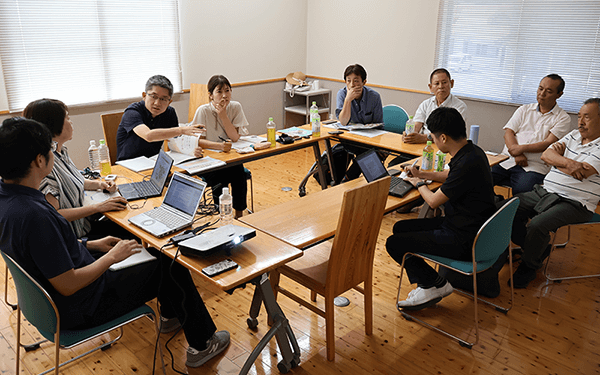
Finally, we asked about the current status of Minken’s cross-border project , “Implementing Cross-Border Solutions to Support Daily Living Activities.” Ms. Abe responded:
We are continuing to work on the ongoing cross-border issues that could not be fully resolved within the grant period [2013–2014 ]. The efforts of Mikamo are certainly representative of the region. Moreover, we have received funding from the Toyota Mobility Foundation to implement a project to address transportation challenges in Ueyama, Mimasaka City, which we regard as a continuation of our cross-border project. The Ueyama district is located on a prefectural border, and from the lessons learned in the cross-border project, we developed civilian initiatives, including the establishment of mutual support groups in the community and transportation services that take advantage of technologies such as electric vehicles. In addition, we were able to build relationships with transportation service providers and create a network, again with the support of the Toyota Foundation. Furthermore, the network of intermediary support groups in the five prefectures of the Chūgoku region that took the lead in the cross-border project has been further strengthened, and we continue to share knowledge and collaborate in various ways, such as holding staff training sessions with these groups every year.
Japan is continuing to grapple with the serious challenges of a declining and aging population. Problems are not only arising in rural areas but also in the cities—for example, Setagaya Ward in central Tokyo is now said to have the highest number of vacant houses in Japan. These problems are being compounded by the increasing intensity and frequency of extreme weather events fueled by the global climate crisis. In future, Minken hopes to extend the knowledge and experience gained from this cross-border project to support the daily living activities of older adults in other local communities across the country.
